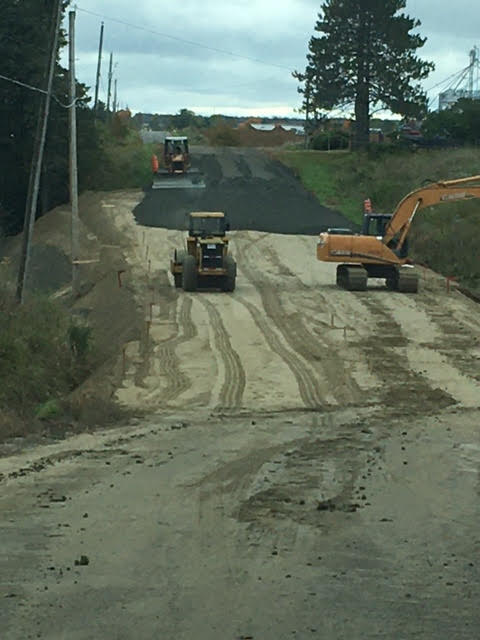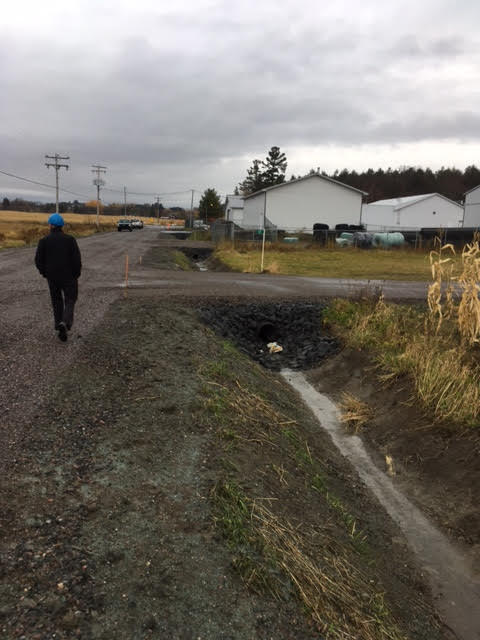Improving roads, working together help Clarendon council get by
STEPHEN RICCIO
CLARENDON March 24, 2021
EDITOR’S NOTE: Over the next several months, THE EQUITY will be reporting on the progress each municipality within the Pontiac has made since the last slate of municipal elections in 2017. This series aims to uncover and expand on what key accomplishments, challenges and notable events each community has dealt with over the past four years.
Being home to a road network of 280 km, the Municipality of Clarendon spent the last four years getting by with a committed council, and a much-needed focus on roads.
Any sparsely-populated rural community typically has a bigger road assignment on its plate in comparison to urban ones, and Clarendon is no exception.
“It seems simple to say roads is our responsibility, not like an urban area like at a town where they’ve got sewage and things like that, but if you [think about] 280 km of roads and you’re looking after those —we do sections every year and we keep track of where we’ve done and what we’ve done in this area — it’s just continuous flow every year,” Mayor John Armstrong said. “From the time that plow harness comes off until fall, we have roads, culverts, things that need to be upgraded and improved.”
Councillor Phillip Elliott, the municipality’s road chairman, said that some of the key projects accomplished over the past few years include repairing a culvert on Fifth Line that had created visibility issues and repairing a washout on Campbell’s Bay Road caused by the 2019 flooding.
Sand Bay Road, leading from Giant Tiger to the Fifth Line, is set for total replacement after being delayed in 2020 due to COVID, as Elliott said there are an abundance of trucks that traffic the road. Tenders are about to be sent out, but Elliott expects the project to cost more than anticipated, as is typical.
“We have all these paved roads in Clarendon that are in bad condition because they weren’t prepared properly in the first place,” Elliott said. “So to build this road, right it costs a lot of money, but once it’s done we hope to have a really good 2 km road down.”
Director General Patricia Hobbs explained that the gas tax program, also known as the 2019-2023 TECQ, covers the bulk of road work costs for the municipality. She said that the municipality contributes roughly $300,000 in order to get access to the roughly $900,000 grant.
Elliot said that one of the biggest aspects of road work is culvert repairs.
“Some of them are big, some of them are small, but the big ones take a lot of money and a lot of time and equipment. It costs a lot of money to do a big culvert,” Elliott explained. “We try to do one or two I guess every year … it could cost as much as $65,000.”

Armstrong said that on top of culverts, catering road surfaces to farmers and their equipment is key, something the municipality has no shortage of.
“[One of] the main things that we have along with culvert repair is we have to build up our roads,” he said. “The equipment, our beef and dairy farmers and their cash croppers, the equipment has got so large now it’s so heavy, that we have to get the roads so that they can travel on them safely … because that is our main business, agriculture. And we want to do our very best to keep our farmers [and] everybody happy.”
Both Armstrong and Elliott explained that the council meets with the municipality’s public works employees every year to discuss which roads require focus. They said this input from the employees on the ground provides important clarity for any road repair decisions.
Going into the elections in 2017, the incumbent Armstrong had told THE EQUITY that roads were always the top priority. He also mentioned his focus on the municipal share amounts sent to the MRC Pontiac.
He was referring to the increased value of the municipality’s shares over time, which he said has continued since 2017. However, he said there isn’t anything to be done to remedy the situation.
“Every municipality is in the same situation…” he said. “It’s quite expensive but it’s something that all of the municipalities have to bite the bullet and do it to try to keep everything running smoothly.”
He said that some people might think the share value going up is a municipal tactic to increase revenue. However, with the increased value of farm land throughout rural areas like the Pontiac over the past 10 years, Armstrong said that when an assessment evaluation goes up every couple years, the shares go up as well.
He added that he was happy to have not increased the mill rate for taxpayers, as staying within a responsible budget is a priority for the council.
One issue that has permeated affairs in Clarendon since 2019 was one resident’s installation of a septic system in the riverside community of Sand Bay. Although the system was installed by resident Sandra Wolf with authorization from the municipality and the Ministry of Natural Resources, residents immediately raised questions when news of the system emerged on social media. The septic system was being buried several feet underground on the Sand Bay beach, a popular swimming spot for locals that is technically the municipality’s land.
Those questions continued when a green algae bloom emerged in the river just offshore in April of 2020. Although the septic system passed numerous water tests, residents voiced their concern about the situation and specifically the state of water flow in the bay during a July 14 protest held outside of the Clarendon office.
Residents who attended the protest were part of the Protect the Sand Bay Waterfront Committee. They raised more than $10,000 to hire legal representation to pursue the issue further.
Armstrong declined to comment on the situation due to its sensitive nature in the community.
However, Elliott did say that the municipality had done what they could to find a resolution and that it was now best to look ahead to the future.
“We can only answer the question so many times without, in my mind as councillor and as a taxpayer in Clarendon, we’re wasting tax dollars,” he said. “Those tax dollars should be putting gravel on roads in Sand Bay and brush cutting the ditches so you can see a deer running out in front of you.”
While dealing with its ups and downs, most notably COVID-19, Clarendon’s council remained the same since 2017, with Armstrong and Elliott being joined by councillors Rick Younge, Jonathan Dagg, Edward Walsh, Eric Smith and Mavis Hanna.
Elliott said that one of the toughest things about COVID, aside from delaying road work, was navigating council meetings without being together in person.
However, Armstrong said the council has managed well enough.
“I hope all [the] council feels the same way, it’s a pleasure working with the people here,” he said. “We may have differences of opinion, but when we walk out the door, we’re all friends. That’s the way it’s always been and that’s the way we like it.”

FREE ACCESS FOR EQUITY SUBSCRIBERS
This article is available free to all subscribers to The Equity. If you are a subscriber, please enter your email address and password below.
SET UP YOUR ONLINE ACCOUNT
If you are a subscriber but have not yet set up your online account, please contact Liz Draper at liz@theequity.ca to do so.
HOW TO BECOME A SUBSCRIBER
To become a subscriber to The Equity, please use our Subscribe page or contact liz@theequity.ca

